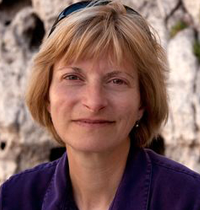NOTE: Images in this archived article have been removed.
The Cienega de Santa Clara is an area of Delta wetlands sustained by agricultural drainage crossing into Mexico from the United States. The beautiful Cienega is a reminder of what the larger Delta used to be. Photo credit: Pronatura Noroeste
Today, the United States and Mexico signed a landmark agreement that will return vital flows to the lower Colorado River and its once-bountiful Delta and reconnect the river to its final destination, the Gulf of California.
Through a five-year pilot initiative, the new agreement could demonstrate the potential to bring back crucial portions of the once-wondrous Delta ecosystem, secure habitats for endangered species, and restore freshwater flows to the upper Gulf and its prized fisheries.
Success will pave the way for a longer-term, follow-up pact in 2019.
The binational agreement, known as Minute 319, is an amendment to the 1944 water-sharing treaty between the two countries. In addition to securing flows for the river, the agreement sets out new guidelines for sharing the pain of droughts and gives Mexico the ability to store water in Lake Mead, the vast reservoir behind Hoover Dam.
One of North America’s most unique and valuable ecosystems,
the Delta provides habitat for more than 380 bird species, including the endangered Yuma clapper rail and southwestern willow flycatcher, as well as spawning and nursery grounds for once-abundant fish, such as the
Gulf corvina and the
totoaba.
The Delta is also home to the indigenous Cucapá, who have fished and farmed in the area for hundreds of years. Their numbers have diminished dramatically with the drying up of the Delta.
Because the treaties that divvied up the Colorado’s water among the seven U.S. states and Mexico allocated no flows to sustain the river ecosystem, the Delta has been decimated, with wetlands now covering only a small fraction of their historical 2 million acres.
Although the water to be returned to the Delta amounts to only about 1 percent of the river’s annual flow spread over the five-year period, scientists working in the Delta are confident that meaningful restoration can be accomplished.
“Through this agreement water will be flowing in the Colorado River in Mexico, supporting thousands of acres of riparian and marsh habitat, enhancing the rich estuary near the mouth of the river and connecting with the Gulf of California. Building on the resiliency of this ecosystem, these flows will support and regenerate habitat for hundreds of resident and migratory species,” said
Osvel Hinojosa, Director of the Water and Wetlands Program for Pronatura Noroeste, in an email exchange with me. “Minute 319 is a landmark for the restoration of the Delta.”
Working together for many years, a bi-national team of scientists has laid out a “map of the possible” detailing
conservation and restoration priorities for the Delta ecosystem. More recently, conservation groups have formed the Colorado River Delta Water Trust to secure water and manage the restoration efforts.
With additional support and flows from this groundbreaking binational agreement, the Delta stands to regain some of its former glory.
And as it does, this historic effort might just inspire other nations to revitalize their own forgotten and ailing delta ecosystems. If so, the world will become a more bountiful and beautiful place for it.







